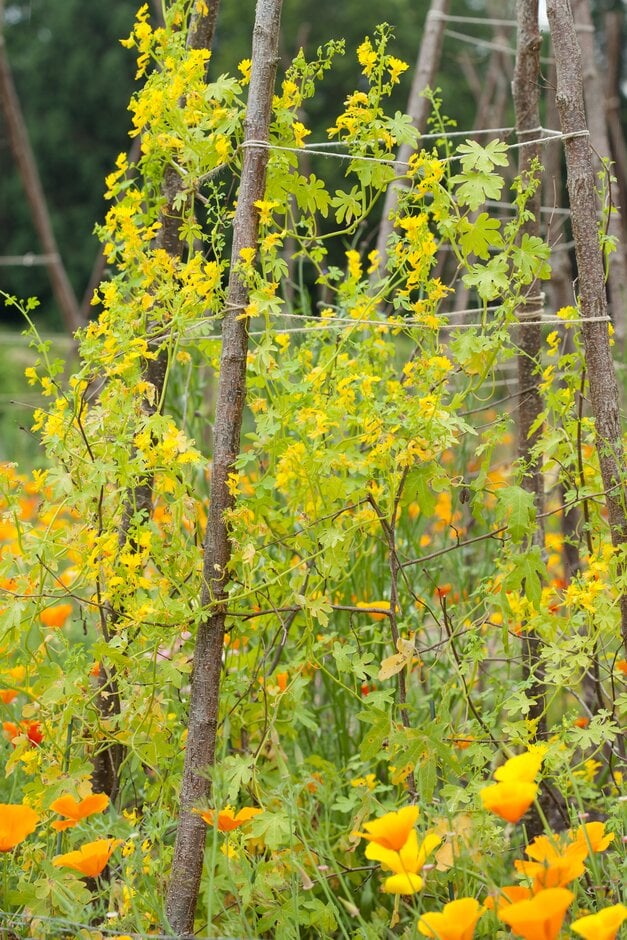Tropaeolum peregrinum
canary creeper
A frost-tender perennial climber to 4m tall usually grown as an annual. Leaves 2-5cm across are divided into five broad lobes. Spurred, bright yellow flowers with small lower petals and two, much larger, fringed upper petals are borne from summer until the first frosts
Size
Ultimate height
2.5–4 metresTime to ultimate height
1–2 yearsUltimate spread
1–1.5 metresGrowing conditions
Moisture
Moist but well–drained, Well–drainedpH
Acid, Alkaline, NeutralColour & scent
| Stem | Flower | Foliage | Fruit | |
| Spring | Green | |||
|---|---|---|---|---|
| Summer | Yellow | Green | ||
| Autumn | Yellow | Green | ||
| Winter |
Position
- Full sun
Aspect
West–facing or South–facing
Exposure
Sheltered Hardiness
H3Botanical details
- Family
- Tropaeolaceae
- Native to GB / Ireland
- No
- Foliage
- Deciduous
- Habit
- Climbing
- Potentially harmful
- Skin allergen. Wear gloves and other protective equipment when handling
- Genus
Tropaeolum can be annuals or perennials, bushy, trailing or climbing by twining stems, with simple or palmately lobed leaves and showy funnel-shaped flowers with five long-clawed petals and often a spur
- Name status
Correct
- Plant range
- Peru Ecuador.
How to grow
Cultivation
Grows best in a well-drained soil in full sun; mulch in autumn to protect from frosts. Best grown as an annual in cool areas
Propagation
Propagate by seed
Suggested planting locations and garden types
- Cottage and informal garden
- City and courtyard gardens
- Flower borders and beds
- Wall side borders
Pruning
No pruning required
Pests
May be susceptible to glasshouse whitefly and glasshouse red spider mite and whitefly
Diseases
Generally disease-free
Love gardening
Sign up to receive regular gardening tips, inspiration, offers and more
View our Privacy Policy
Get involved
The Royal Horticultural Society is the UK’s leading gardening charity. We aim to enrich everyone’s life through plants, and make the UK a greener and more beautiful place.
